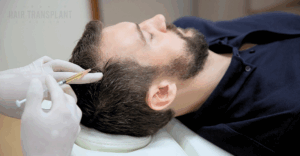The perception of hair transplants has taken quite a shift over the last couple of decades. They were once viewed as a desperate measure for guys who simply couldn’t accept they were going bald – yielding less-than-desirable results for a considerable amount of money.
However, modern transplantation techniques mean that it’s now possible to get incredibly natural-looking results and as a result, the public at large are starting to realise that hair transplants are simply another form of technology that enable people to improve their appearance.
If you or someone you know is considering a hair transplant but you don’t feel well-informed enough to make a decision then you should find this guide incredibly helpful.
Types of procedures
There are two main types of hair transplant procedures performed today – FUT (Follicular Unit Transplantation) and FUE (Follicular Unit Extraction). Below is an explanation of each –
- FUT – FUT, also known as a “strip transplant”, involves removing a strip of hair from the donor area (where the hair is taken from) and then removing the follicles individually to be placed in the recipient area (where the hair is thinning). The advantage of FUT is that it allows for the best quality donor hair to be extracted. The main disadvantage is that it leaves a scar, although this isn’t an issue for those with longer hair.
- FUE – FUE differs from FUT in that the donor hair is taken from a much larger area and the follicles are individually removed from the back and sides of the head directly. A big benefit of FUE is that because the follicles are removed individually, there is no scar left behind.
Finding the right surgeon
A very important decision to make when getting a hair transplant is which surgeon is going to perform it. When looking for a surgeon, you should always consult with them first and make you’re happy with the answers they give to your questions. Find out how much experience they have performing the type of procedure you want to get and also seek out testimonials if possible.
Aftercare
Aftercare is an extremely important when getting a hair transplant. Immediately after the new hair has been transplanted, you need to do everything you can to ensure it takes root properly. This means avoiding rigorous exercise as well as combing your hair and wearing tight hats. You should also wear a special cap when showering (this will be provided by the clinic in most cases).
Results to expect
Something that your surgeon should always discuss with you is the results you can expect. This will vary from one person to the next and depends on a number of factors, such as the quality of the donor hair, the extent of balding and how well you respond to treatments.
For a person with very severe balding then it’s usually not reasonable to expect to get back to having a full head of hair – rather more coverage is what should be aimed for.





